Medicinal Properties of Yarrow: Wound Care and More
The medicinal properties of yarrow (Achellia millefolium) have put it on my list of favorite medicinal herbs, it’s one of my go-to herbs for wounds and skin infections. As a bonus, it’s not only extremely helpful medicinally, it’s also beautiful to look at. I love when herbs are pretty and useful! It is frequently dried and used in bouquets because it’s beautiful.
It’s very easy to grow; in fact if you do try to grow it you’re likely to have it forever, even if you try to get rid of it. You can often find Yarrow in areas among wild flowers which makes it fairly easy to forage. I’ve even seen it growing in sidewalk cracks in the middle of Seattle! If it can grow there, it can grow just about anywhere. All you need to do is sprinkle the seeds where you want the plant to grow and it’ll likely sprout (sometimes where you didn’t put the seeds, too!).
The white variety of yarrow is the most commonly seen and is the most likely to find if foraging for the plant. However, yarrow comes in different shades of yellow, pink, and purple as well. My favorite place to buy the colored varieties of yarrow seeds is Baker Creek Heirloom Seed Company.
Identifying Yarrow
Yarrow is pretty easy to identify once you know what to look for. When in bloom, yarrow has a tight cluster of small flowers that form a disc shape. You may see one cluster of flowers or you may see multiple ones in a tight group.
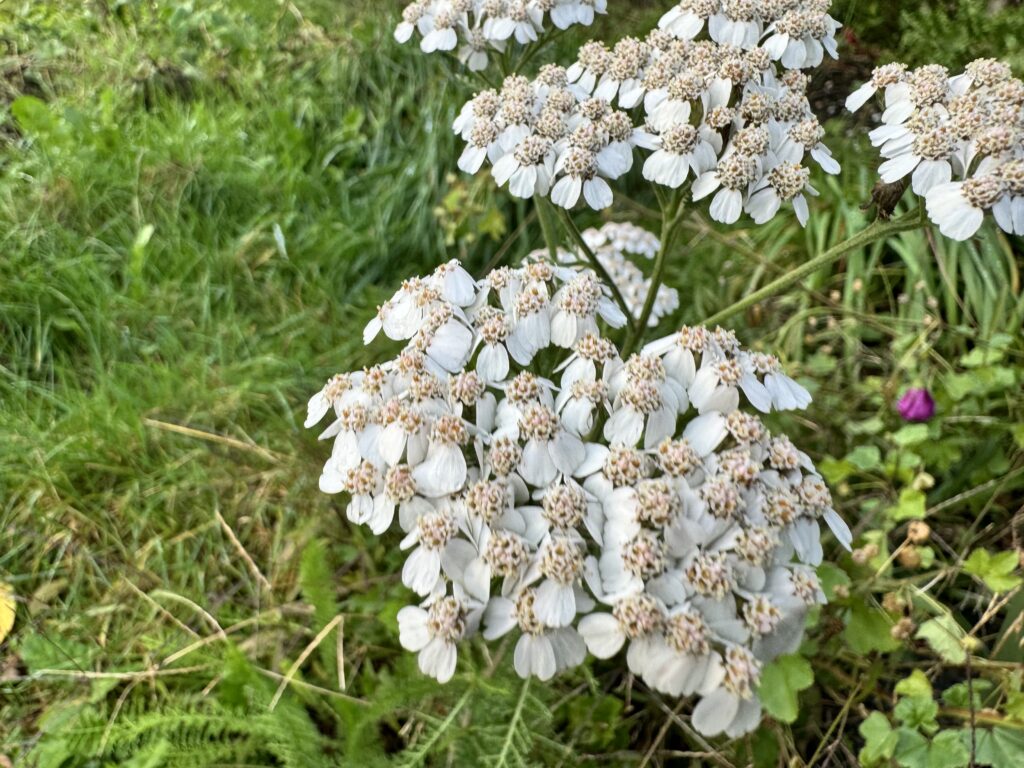
The easiest way to identify yarrow is by the leaves. Yarrow has very distinctive feathery leaves that are longer towards the base of the plant and become shorter as you near the top. These leaves make it easy to identify even when the plant is not in bloom.
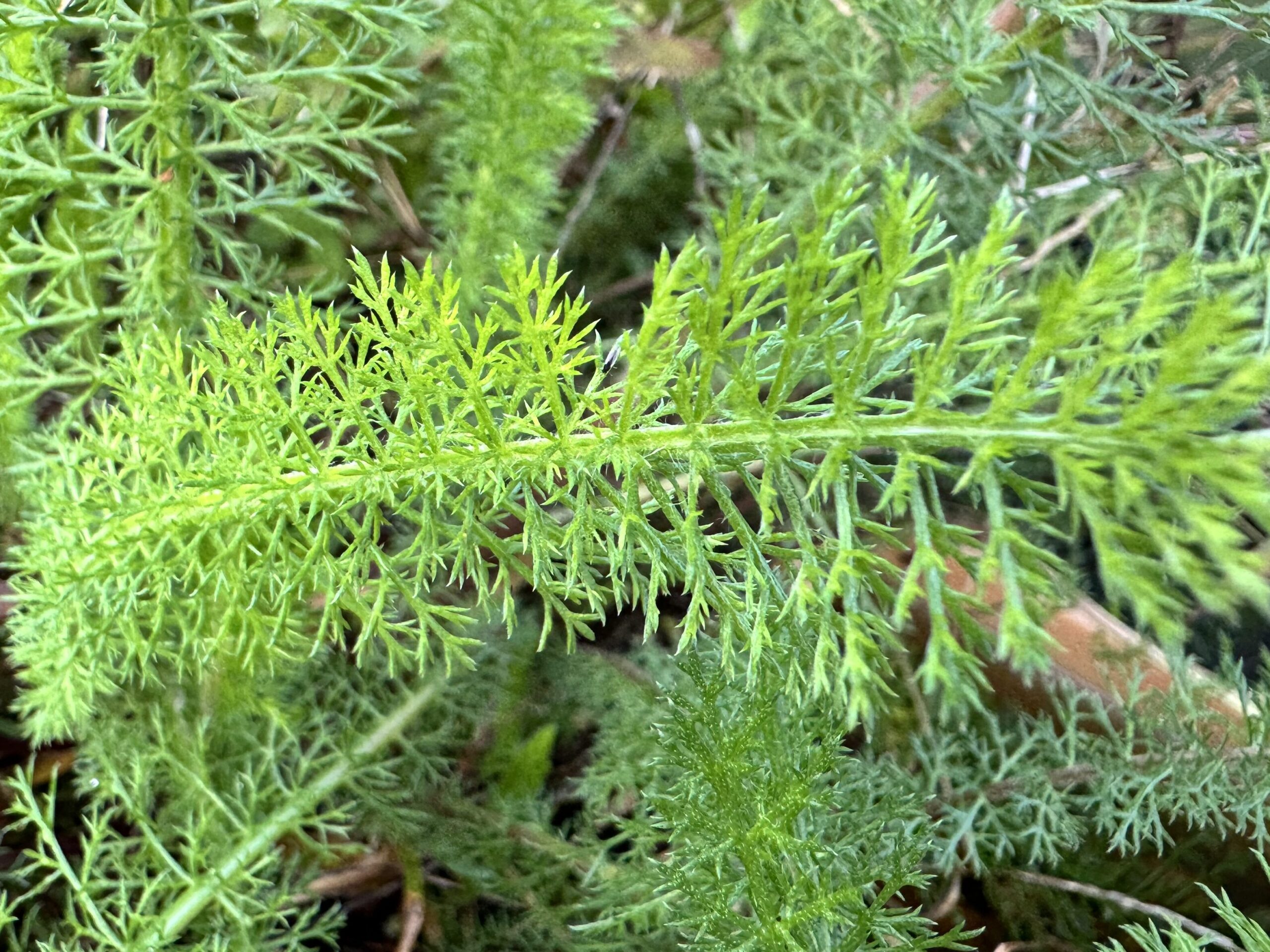
Typically the aerial parts of the plant are used for medicinal purposes: the leaves and flowers. The leaves and flowers contain different compounds that lead them to have different medicinal properties. You might find that including both in however you choose to use the plant may make a bigger impact.
Medicinal Properties of Yarrow
*I am not a doctor and is this not medical advice. Please consult your physician before using herbal medicine.
Many different cultures have used yarrow medicinally for thousands of years. In fact, the plant originally got it’s name Achellia from Achilles who used yarrow to treat the wounds of his soldiers in the classic book The Iliad by Homer. Traditional Persian literature states yarrow was used medicinally as well in their culture many hundreds of years ago. Chinese and Turkish cultures have also reported using it for different medicinal purposes.
Wound Care
Helps Stop Bleeding
Yarrow is best known in the herbalism world for wound care, and for good reason. It can help stop the flow of blood by helping your blood vessels constrict at the site of the wound. I’ve used this for small scrapes and cuts, but also on my dog’s nails if I accidentally take a little too much off when trimming them.
Yarrow can also work on nosebleeds to help stop the bleeding and soothe the irritated mucous linings of the nose.
Helping stop the flow of blood is not the only way yarrow helps with wound care.
Antibacterial, Anti-Inflammatory, and Pain Relief
It also has strong antibacterial properties as well. I had a bug bite a couple of years ago that got infected. Instead of antibiotics, I made a tea of oregano and yarrow, both have antibacterial properties and I had both of them on hand. I used cloth to soak up the tea and placed the cloth on the infected area as a poultice. I left it on there for about 10 minutes and repeated this 3-4 times a day. Within a couple of days, the infection was gone and the bite was healing well. No antibiotics needed, just some good old fashioned plant medicine.
Yarrow can help heal an infection once you have it, but it also has antiseptic properties to help prevent the infection in the first place. If only I had done that in my previous example it would have saved me a lot of discomfort!
Yarrow’s anti-inflammatory properties help with pain relief for wounds, but it can also help with other issues such as eczema and rheumatism. These conditions are caused by inflammatory responses in the body and yarrow can help bring that inflammation down to bring relief.
These medicinal properties of yarrow are why I like to use it in wound salves made with infused oil.
Gastrointestinal Issues
Everyone suffers from gastrointestinal disorders from time to time, but many people these days are sadly dealing with chronic issues. Many herbs are great for various digestive issues; yarrow is one to add to that list. It contains chemical compounds that give it gastroprotective qualities. This means it’s kind of an overall tonic for the digestive system. For these issues I think a tea is probably the most effective way, or possibly a capsule.
Yarrow can help alleviate ulcers, it can also help increase bile flow from the gallbladder. This is very important because the bile that’s being stored in your gallbladder helps break down the fats in the food you eat. Not only can yarrow help increase bile, it can also help increase saliva and stomach acid which also aids in proper digestion. After all of that digestion, maybe you had a big bowl of beans for dinner, you might be feeling a little gassy. Yes, you guessed it, yarrow can also help you with gassiness as well.
If you’re suffering from hemorrhoids yarrow can help with that, too. For hemorrhoids I’d probably choose to use it as a salve on the affected area for the most effective treatment.
The anti-spasmodic medicinal properties of yarrow can help relieve stomach cramps, as well as menstrual cramps (even though that is not part of your digestive system).
Colds and Flus
Every Winter we go through cold and flu season, and for some of us we’re unlucky enough to come down with these even in the middle of summer. Yarrow can help with some of the typical cold and flu symptoms. It can act as an expectorant to help cough up the gunk that settles into your lungs. For this, it’s best used as a chest rub in the form of an infused oil or salve. You can also put it in hot water and create a steam to breathe in.
For this reason, and it’s anti-inflammatory abilities, you can also use it if you suffer from hay fever. Anything allergy related, however, my go-to would probably be stinging nettle. But yarrow can step in if you’re in a pinch and it’s what you have.
Yarrow is wonderful at helping with fevers. A fever is your body’s way of fighting an infection. Unless the fever is really high, I like to let the fever work it’s course because it’s heating your body up to kill the bacterial or viral invaders that are making you sick. Yarrow doesn’t necessarily act as a fever reducer like acetaminophen would, but a tea of it may help increase sweating and make the fever more efficient, so it does it’s job and breaks faster than it may have without the little yarrow boost. It may increase sweating at times you don’t want it to, as well, so keep that in mind when using!
Other Medicinal Properties of Yarrow Worth Noting (and more!)
Yarrow has antioxidant properties that could provide useful for all sorts of diseases. Science is still researching it’s potential for things like cancer and other terrible conditions. If this interests you, keep an eye on medical research and hopefully scientists will discover more wonderful things about yarrow and it’s antioxidant properties.
It can also potentially help with blood circulation, lowering blood pressure. I found this mentioned a few times, but didn’t read any specific studies surrounding it so take that information as you will. My favorite herb for blood pressure (high or low) would still be hawthorn.
One of my other favorite uses for yarrow is something that doesn’t really fit into any specific medicinal box. This is as an insect repellent. If you choose to grow or forage yarrow, you’ll find that it has a strong odor. That odor is caused by the strong essential oils the plant contains. Insects don’t typically like the smell of yarrow; for this reason I like to infuse it in witch hazel and make an insect repellent spray with it. I generally use yarrow and cat nip together, since both seem to smell horrible to bugs (I don’t think they smell bad, though!)
Summary of the Medicinal Properties of Yarrow
- Helps to stop bleeding
- Anti-Inflammatory
- Antibiotic
- Antiseptic
- Can help relieve pain
- Relieve gassiness
- Increase bile flow from gallbladderA
- Anti-spasmodic
- Expectorant
- Increase sweating
- Fever reducer
- Hemorrhoids
- Insect repellent
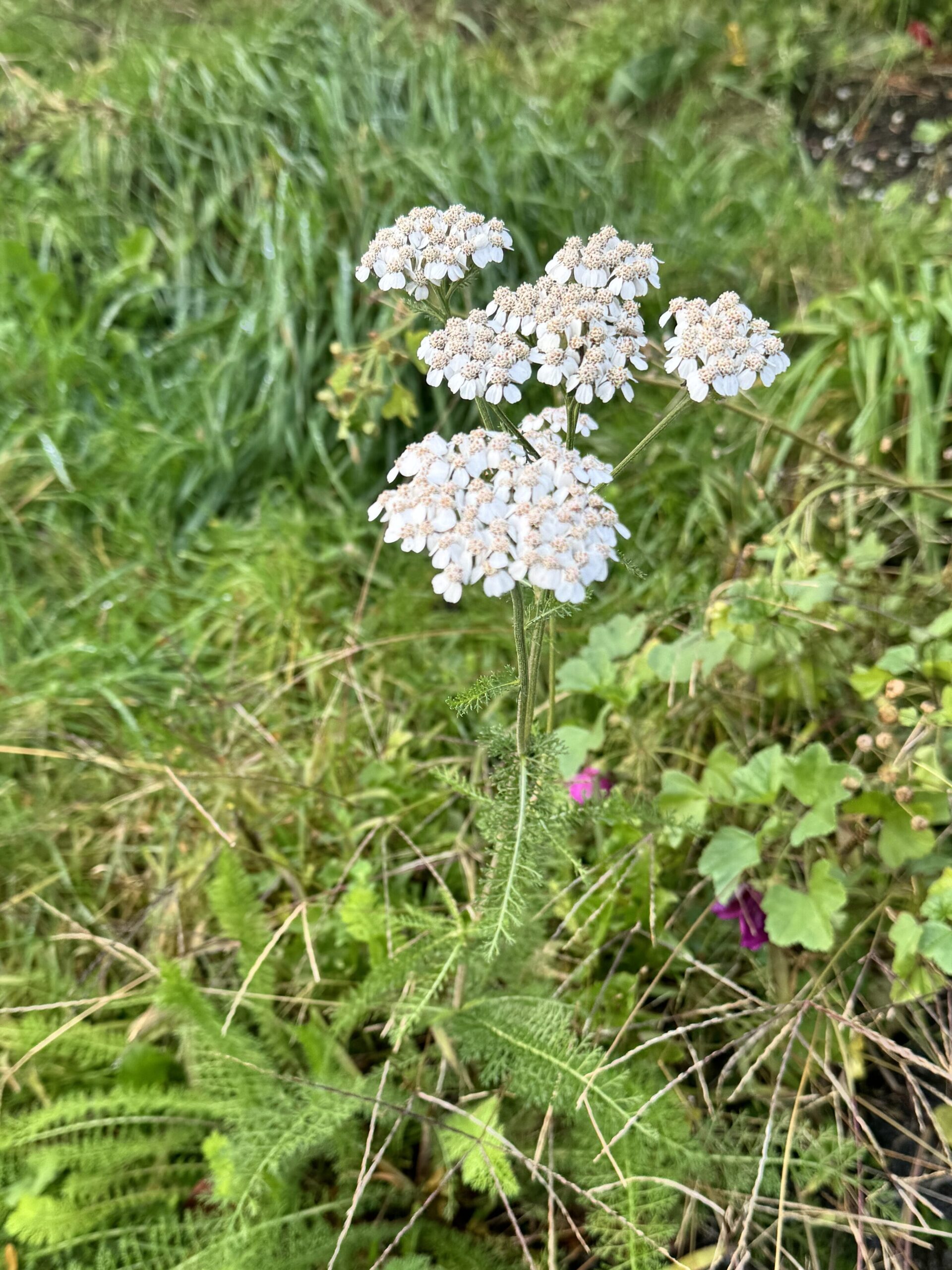
How You Can Use Yarrow As A Medicine
There are several ways you can use yarrow as a medicine:
- Make a tea
- Use it as a tincture
- Infuse it in oil
- Infuse it in witch hazel
Making a Tea to Extract Medicinal Properties
To make yarrow into a tea, take either fresh or dried yarrow and put about a teaspoon per cup into a tea bag or infuser. Poor 8 oz of boiling water over it and cover the cup to keep the steam from escaping. There are special tea mugs you can buy that come with covers, or you can just cover the cup with a small saucer plate like I do.
Let the tea steep for about 10-15 minutes then remove the cover. Take out the yarrow and enjoy your refreshing medicinal tea or use it as a poultice like I did with my infected bug bite.
Making a Tincture
Tinctures typically involve alcohol, but can be made with vegetable glycerin or vinegar if you do not consume alcohol. Keep in mind that when you are taking a tincture, you are taking such small amounts that it you will not feel any affects of the alcohol.
I make a tincture by using 100 proof vodka. I like to use this because it’s 50% water and 50% alcohol. To me it makes a nice, balanced tincture and can extract both the alcohol and water soluble properties of the plant in equal amounts.
Fill a jar with fresh yarrow, I like to cut it up into smaller pieces so I can fit more in and have more surface area for the alcohol to extract from. I believe it’s important that the plant be fresh so it still retains all of it’s water and alcohol soluble properties. (Others may use dried plant material, so this is an area you may need to form your own opinions on what’s best for you.) Make sure you fill the jar to the top with yarrow, so don’t pick a jar that’s larger than the amount of plant material you have. It doesn’t matter what jar you use, just make sure it has a lid that is tight.
When your jar is full of yarrow, poor the alcohol over it until it reaches the brim of the jar. You may have to let it sit for a minute before the alcohol makes it into all the nooks and crannies. Put on the lid tight and sit the jar in a cool dark place for 6-8 weeks.
When it’s ready, strain out the plant material and your tincture is ready for use.
Tinctures are pretty powerful medicine, so start slowly when taking it. Start with just a few drops several times a day, and work up until you reach the number of drops your body needs to feel the medicinal affects.
Making an Oil Infusion
An oil infusion is best used to make a salve for use to help heal wounds or as a chest rub. My favorite oil to use is avocado oil, but you can use a pure olive oil, grapeseed oil, or basically any oil that isn’t soy or canola based. I wouldn’t recommend using either of those due to their hormonal and inflammatory affects on the body.
Oil infusions should be made with dry plant material only. Because oil and water are the perfect breeding ground for bacteria, if you use fresh plant material your oil is going to end up growing mold.
Fill a jar up with dried yarrow, leaves, stem and flowers. Just like with a tincture, fill the jar full and cut it into smaller pieces for more surface area.
Pour the oil over the plant material up to the rim of the jar. Cap it tight and place it in a warm, dark place for 6 weeks. After 6 weeks, strain out the plant material and your oil is ready to go!
Repeat these steps with witch hazel if you choose to infuse yarrow with it. Nothing is different, just replace the oil with witch hazel.
Contraindications
Because it’s unethical to perform studies on pregnant women (I know I never would have allowed it!), it’s not really known whether yarrow is safe during pregnancy or not. But, because it can have an effect on the uterus if taken, it’s best to steer clear of it if you are pregnant.
It can also intensify other herbs if taken together. If you are particularly sensitive to any plant or herb, consult a physician before combining yarrow with anything. It’s best to consult them before adding any herb to your herbalism arsenal to ensure you are staying safe.
Sources:
Antibacterial activity of Achillea clavennae essential oil against respiratory tract pathogens
A review on phytochemistry and medicinal properties of the genus Achillea
Yarrow (Achillea millefolium Linn.) a herbal medicinal plant with broad therapeutic use – A review
Other Medicinal Herbs Worth Learning About
Pin It for Later
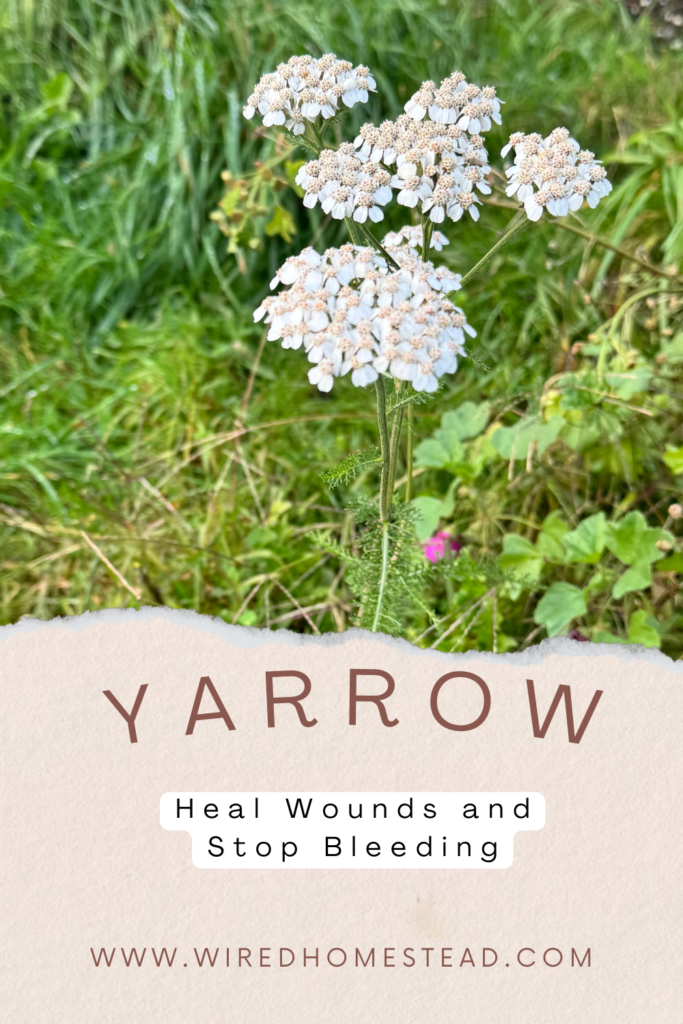

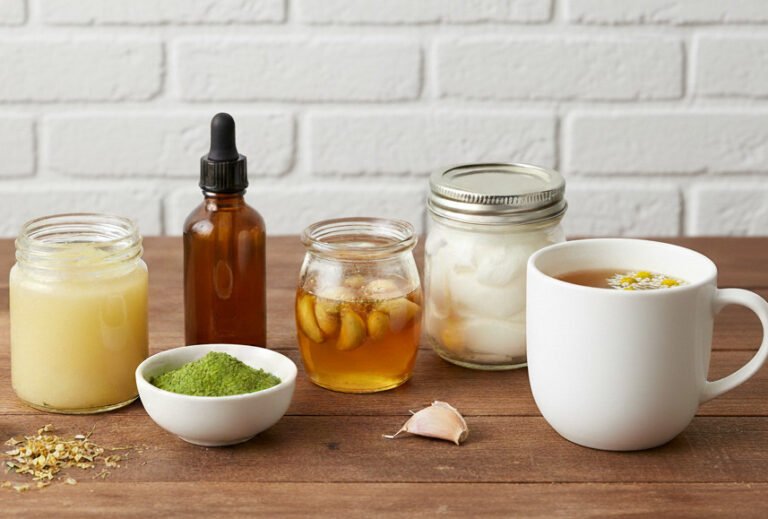
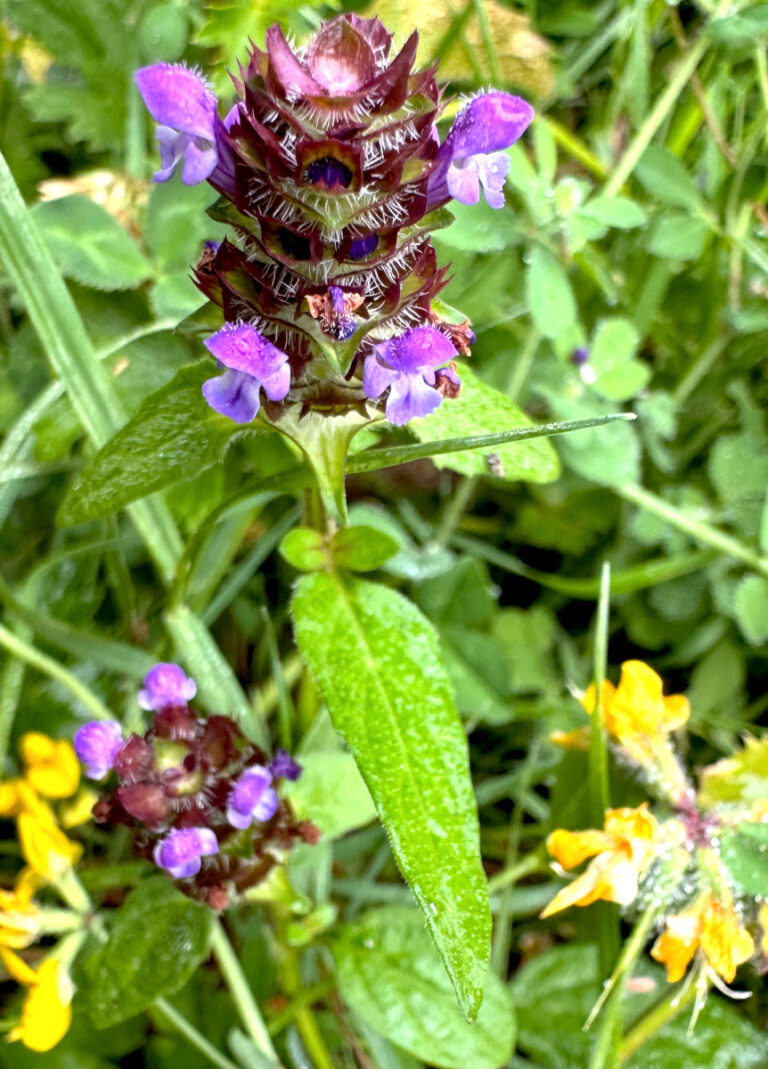




One of my very favorite herbs! I love Yarrow and have been using it for a long time for all sorts of things. I appreciate the information on the use as a bug repellent, I had not thought of that and will definitely have to try it. Thanks for sharing, this is a great read!